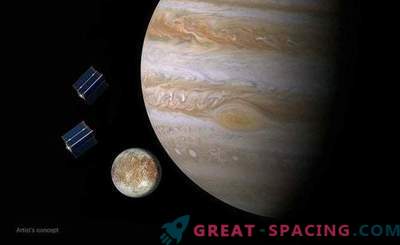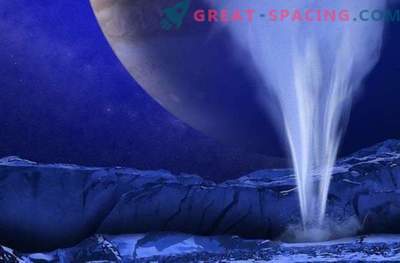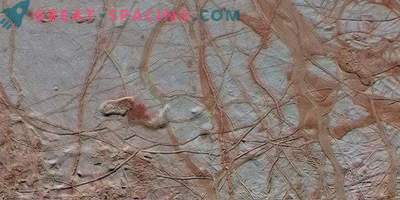
The new model shows how the deformation on the icy surface of Europe (Jupiter's satellite) can transport subsurface oceanic water to the surface. This is just one of several behaviors reported in a new study from NASA's Jet Propulsion Laboratory. Scientists have focused on the linear features ("channels"), found on the satellites of Jupiter Europe and Ganymede.
Animation - a two-dimensional modeling of the possible cross-section of a line passing through the ice shell of Europe. Below is the ocean of the moon, and the thick white line is the icy surface. The middle part is the main part of the ice shell of Europe. The depth is marked on the left, the numbers on the bottom border show the distance from the center of the line. Lanes on Europe and Ganymede usually span tens and hundreds of miles wide.
As the animation moves forward, the ice shell is deformed by gravitational contacts with Jupiter. Cold, brittle ice on the surface is cracking. The grinding material quickly fills the bottom half, representing a collection of tiny white dots. Scientists use the term “fossil” oceanic material because oceanic samples trapped in an ice shell spend hundreds and even millions of years to get to the surface. That is, by the time it reaches the surface, where it can be analyzed by a spacecraft, it will no longer be a sample of the present ocean, but prints of the past.
NASA spacecraft plan to launch in the early 2020s. It will be installed around Jupiter and will become the first ship to study Europe, including the composition of the surface material. The mission will be able to test a specific model using radar probing lunar lines. If Europe fits the model, then it can deliver oceanic material to the surface, where Clipper will analyze it remotely using infrared and UV devices.











































